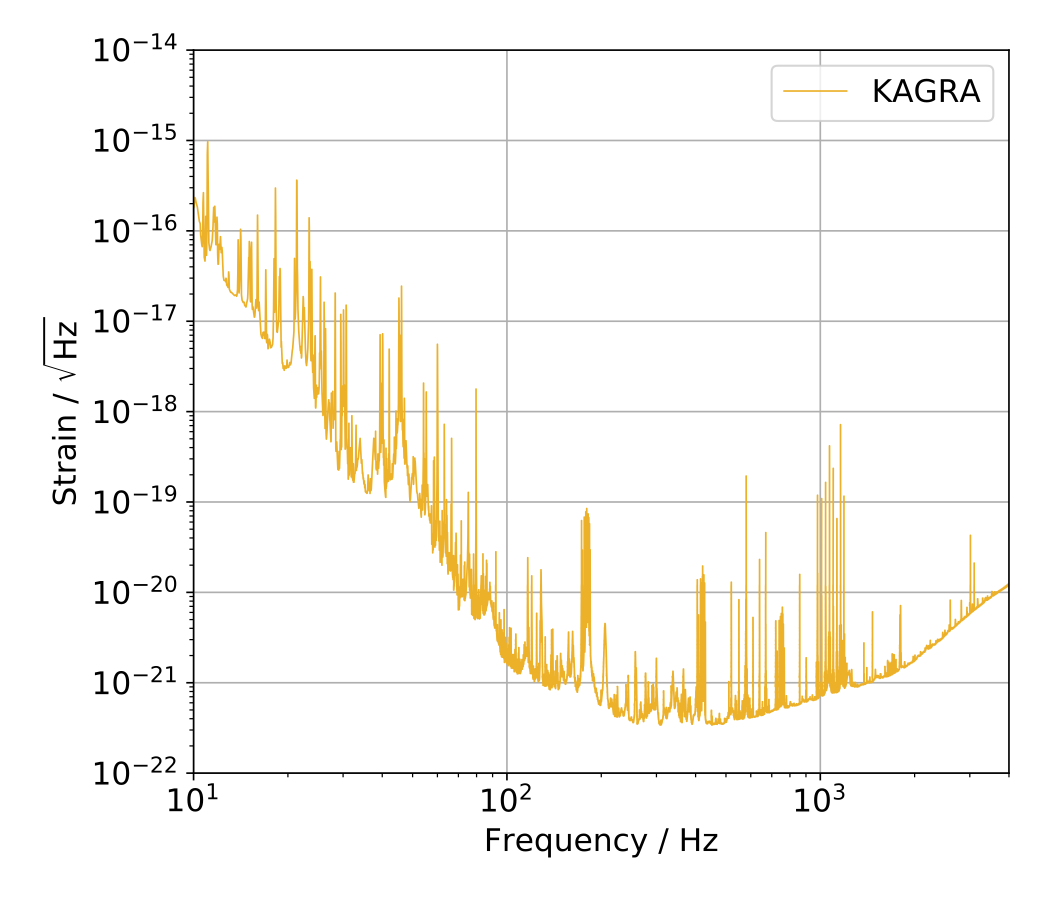The O3GK Data Release
Run Overview
- The O3GK data set includes data only from the GEO 600 and KAGRA detectors
- O3GK dates: 7th April 2020 8:00 UTC (GPS 1270281618) to 21st April 2020 0:00 UTC (GPS 1271462418)
- Data are available from two detectors: G1 and K1
- Data are available at the original 16 KHz and the downsampled 4 KHz sample rates.
Get O3GK Data
- Strain Data: 4 kHz Data 16 kHz Data
- Md5 checksums for 4KHz data: All 4KHz HDF5 files | All 4KHz GWF files
- Md5 checksums for 16KHz data: All 16KHz HDF5 files | All 16KHz GWF files
- Segments: Timeline Data Quality
- Data Access: OSDF
For KAGRA, non-science-mode times used for analysis of GRB200415A: [1270973517, 1270974580] [1270975068, 1270975162] [1270975168, 1270976433]
MICH and PRCL Data
Data from the KAGRA O3GK run were used to search for ultralight vector dark matter (arXiv:2403.03004). The search utilized two auxiliary channels: MICH and PRCL.
GWF Channel Names
The final version of the strain data, available using the buttons above, is sourced from the channels:G1:DER_DATA_HD_CLEANK1:DAC-STRAIN_C20
Associated Papers
- First joint observation by the underground gravitational-wave detector, KAGRA, with GEO 600 (DCC link, published paper link)
- Noise budgets for KAGRA (arXiv link)
Data Quality Segments
Download Segments
- The DATA segment list indicates times when data are publicly available.
- See the Timeline Query Page for other O3GK segment lists.
Hardware Injections
No injections were performed during O3GK.
Instrumental Spectral Lines
- GEO 600 Instrumental Lines
- KAGRA: The O3GK instrumental spectral lines page gives an explanation of instrumental spectral lines.
Representative ASDs


Representative KAGRA ASD reproduced from Figure 1 in the O3GK paper
Technical Details
GWOSC 4 kHz strain data have been repackaged and downsampled from 16384 Hz to 4096 Hz. KAGRA data are not calibrated or valid below 30 Hz or above 1500 Hz, and the data sampled at 4096 Hz are not valid above about 1500 Hz. GEO 600 data are not calibrated or valid below 40 Hz or above 6000 Hz, and the data sampled at 4096 Hz are not valid above about 1620 Hz. Thus, KAGRA (GEO 600) data should not be used below 30 Hz (40 Hz). In most searches for astrophysical sources, data below 20 Hz are not used because the noise is too high. More detailed information about the data set can be seen on the technical details page.
Acknowledge
To acknowledge the use of O3GK data, see the Acknowledgement Page.
Data Set DOI: https://doi.org/10.7935/38s2-7g84
Revision History
- March 3, 2022: First release
- March 15, 2022: Updated links in the section Associated Papers
- June 29, 2022: Added links in the section Associated Papers
- August 30, 2022: Added links to MD5 checksums for strain data
